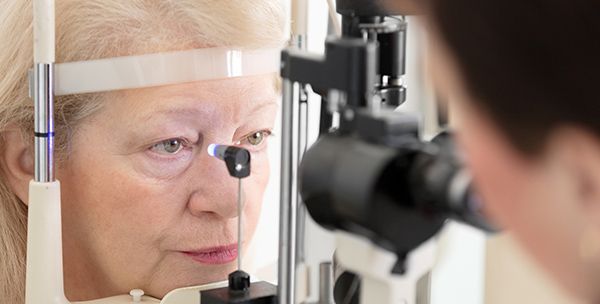- COVID-19
- Biosimilars
- Cataract Therapeutics
- DME
- Gene Therapy
- Workplace
- Ptosis
- Optic Relief
- Imaging
- Geographic Atrophy
- AMD
- Presbyopia
- Ocular Surface Disease
- Practice Management
- Pediatrics
- Surgery
- Therapeutics
- Optometry
- Retina
- Cataract
- Pharmacy
- IOL
- Dry Eye
- Understanding Antibiotic Resistance
- Refractive
- Cornea
- Glaucoma
- OCT
- Ocular Allergy
- Clinical Diagnosis
- Technology
Glaucoma: Seeing the light at the end of the (nano)tunnel
A University of Montréal Hospital Research Center team reveals the fine mechanisms behind the major vascular defects observed in glaucoma patients and identifies new therapeutic targets.

Reduced blood flow and impaired neurovascular coupling are well-known features of glaucoma, the main cause of non-curable blindness affecting 80 million people worldwide in 2020.
According to a news release from the University of Montreal Hospital Research Center, the mechanisms underlying these abnormalities are now unveiled The research was performed by a team led by Adriana Di Polo, professor of neuroscience and ophthalmology at University of Montréal.
The study was published recently in in PNAS, the journal of the National Academy of Sciences USA.1
According to a news release, the findings by Luis Alarcon-Martinez and Yukihiro Shiga, both postdoctoral fellows in Di Polo’s laboratory and first co-authors of the study, reveal that nanotubes connecting pericytes are damaged in glaucoma leading to neurovascular deficits.
According to the university release, pericytes are cells that have the ability to control the amount of blood passing through a single capillary simply by squeezing and releasing it. They are wrapped around the capillaries, the thinnest blood vessels in all organs of the body.
In living animals, as in humans, the retina uses the oxygen and nutrients contained in the blood to function properly. This vital exchange takes place through capillaries.
A blood story
“In our study, we used live imaging of the mouse retina and found significantly reduced capillary diameter and blood supply at pericyte locations in eyes with high intraocular pressure, the major risk factor to develop glaucoma,” Di Polo said in the release. “We show that pericyte dysfunction impairs blood supply causing the death of retinal ganglion cells, the neurons that connect the retina with the brain, ultimately leading to vision loss.”
“A key finding is that inter-pericyte tunnelling nanotubes, thin nanotubes used by pericytes to communicate with each other, were also damaged in hypertensive eyes and contributed to neurovascular dysfunction in glaucoma,” Alarcon-Martinez added in the release.
Calcium as a key player
Calcium entry into pericytes regulates their ability to constrict capillaries and control blood flow. In glaucoma, pericyte calcium influx is excessive, causing decreased blood supply.
“We showed that once the calcium equilibrium is restored within pericytes, vascular and neuronal functions can be recovered in glaucoma,” Shiga explained. “This strategy also prevented retinal ganglion cell death, therefore is an important preclinical proof of concept.”
According to the release, the team said this study paves the way for the development of therapeutic approaches that selectively target pericytes and calcium equilibrium to restore neurovascular health in glaucoma and potentially other neurodegenerative disorders with vascular components such as Alzheimer’s disease.
Reference
Luis Alarcon-Martinez and Yukihiro Shiga et al. Pericyte dysfunction and loss of inter-pericyte tunneling nanotubes promote neurovascular deficits in glaucoma. PNAS, published Feb. 7, 2022. doi: 10.1073/pnas.2110329119
